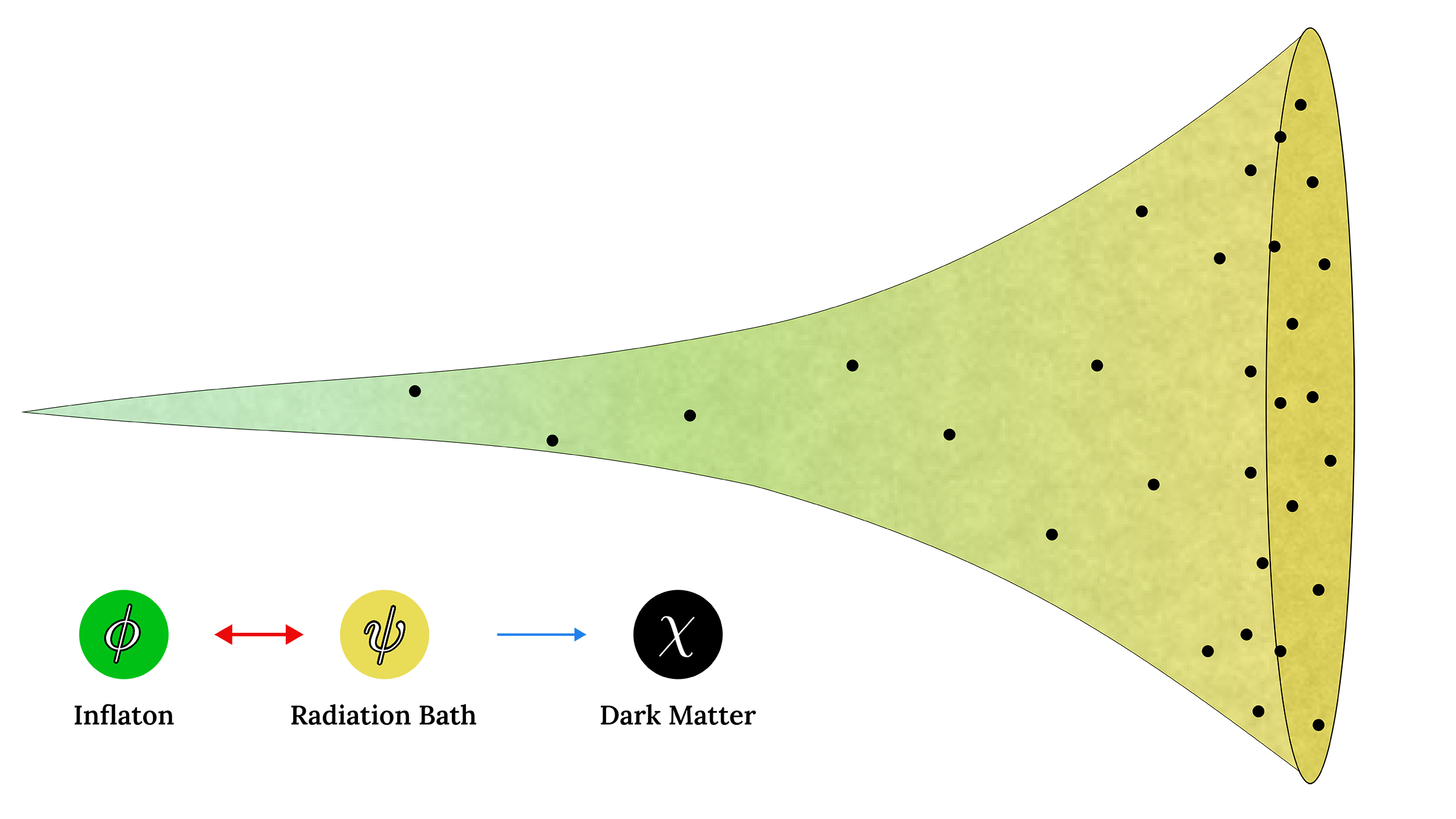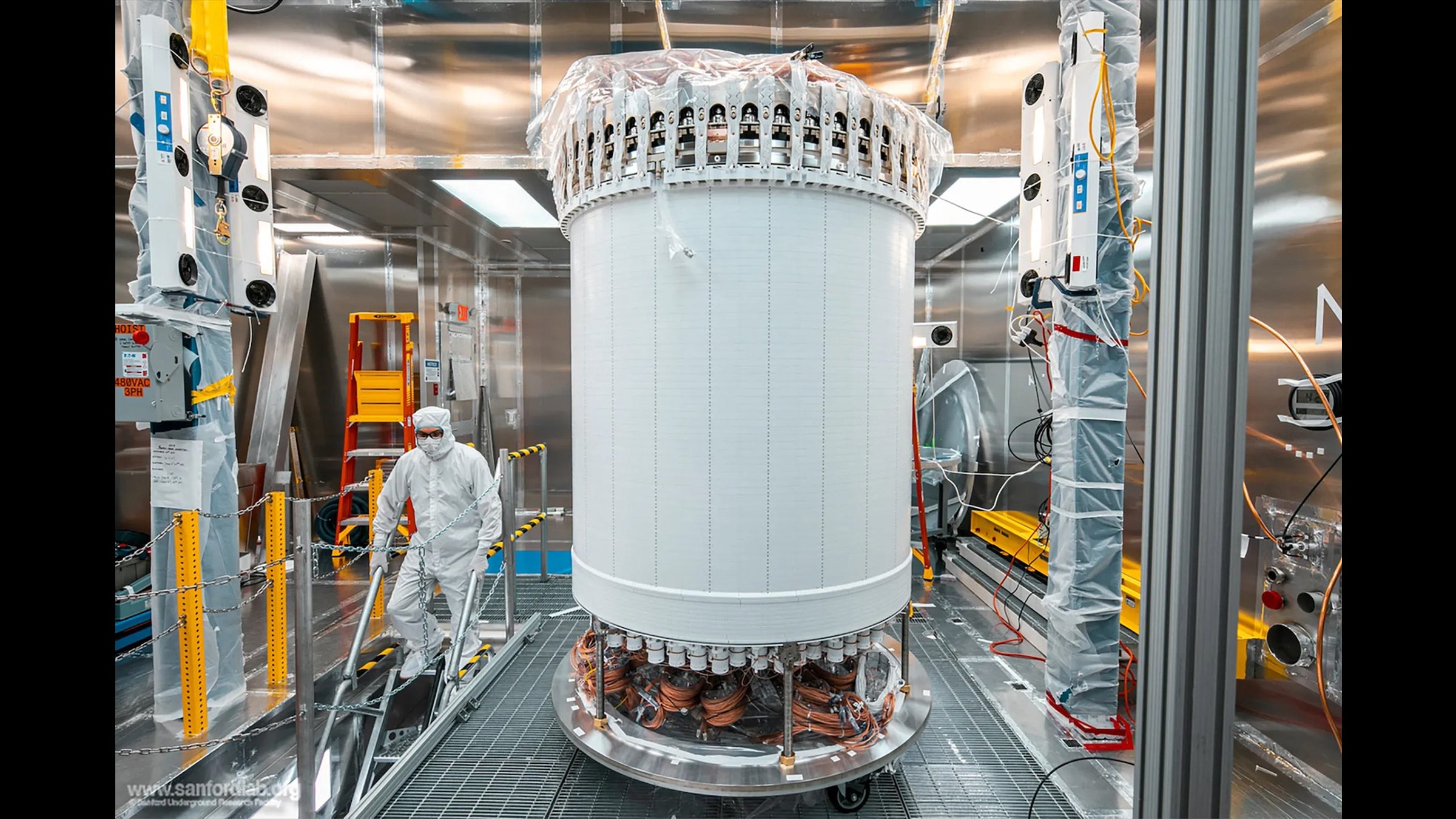Dark Matter Might Have Formed Earlier than Thought
The new model is called WIFI, which stands for dark matter production during Warm Inflation via Freeze-In.

According to a new model, dark matter particles (black dots) began forming as the universe expanded rapidly during a period called cosmic inflation, just before the Big Bang. Illustration credit: Gabriele Montefalcone.
The big cosmic joke of dark matter is that, although we can’t see it, it apparently makes up the vast majority of all the matter in the universe. We literally can’t see the forest for the trees. We’re also not sure when and where it came from.
Through the years, theoretical physicists have proposed various models for how this mysterious dark matter came to be. A team of physicists led by Katherine Freese at UT Austin are now proposing a refinement to a large class of these models, where dark matter is created gradually through tiny, rare interactions with particles in a hot, energetic environment. Their work reveals a novel mechanism where this production occurs just before the Big Bang, during a period of accelerated expansion called cosmic inflation, leading to significant dark matter formation much earlier than in existing theories.
In case you’re wondering how something could happen before the Big Bang, an event that many non-scientists think of as the beginning of the universe, you should know that most cosmologists now agree that the universe as we know it started ever-so-slightly earlier. In this view, when the universe began, matter and energy were so densely packed together that physicists can’t even describe the initial state. This was followed by an infinitesimally short moment, far shorter than a second, of rapid expansion, known as inflation. And then immediately after that, there was the Big Bang.
“The thing that’s unique to our model is that dark matter is successfully produced during inflation,” said Freese, who leads the Weinberg Institute of Theoretical Physics and the Texas Center for Cosmology and Astroparticle Physics. “In most models, anything that is created during inflation is then ‘inflated away’ by the exponential expansion of the universe, to the point where there is essentially nothing left.”
Freese and her team published their model this week in Physical Review Letters. The team includes postdoctoral researcher Barmak Shams Es Haghi and graduate student Gabriele Montefalcone who developed the numerical code that allowed them to perform their calculations. Their new model is called WIFI, which stands for dark matter production during Warm Inflation via Freeze-In.
In this new mechanism, all the dark matter that we observe today could have been created during that brief period of inflation. In this scenario, the quantum field driving inflation loses some of its energy to radiation, and this radiation, in turn, produces dark matter particles via a mechanism called freeze-in.
“In our study, we focused on the production of dark matter, but WIFI suggests a broader applicability, such as the production of other particles that could play a crucial role in the early universe's evolution. This highlights new opportunities for exploration in future research,” Shams Es Haghi said.
There currently isn’t a direct way to confirm this proposed model, but Montefalcone said that a key part, called warm inflation, will be tested by upcoming experiments of the Cosmic Microwave Background and surveys of large-scale structures in the universe.
“If future observations confirm that warm inflation is the correct paradigm, it would significantly strengthen the case for dark matter being produced as described in our framework,” he said.



